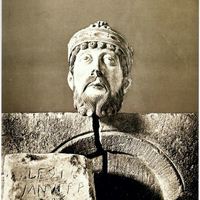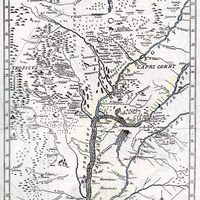Papers by Rene' D . Horst
The American Historical Review, Oct 1, 2020
Routledge eBooks, Mar 25, 2020
The History Teacher, Feb 1, 2019
Routledge eBooks, Mar 25, 2020

"Engaged, nuanced, and accessible--this untold story of Paraguay's indigenous peoples co... more "Engaged, nuanced, and accessible--this untold story of Paraguay's indigenous peoples constitutes an important addition to the English-language literature on this understudied country."--John Charles Chasteen, University of North Carolina, Chapel Hill "Provides original insights into the makings of indigenous policy during Paraguay's Stroessner era and the democratic opening after 1989 . . . shows how state policies were buffeted by external actors but also how indigenous peoples fought back. A must-read for those interested in indigenous policy in Latin America."-- Erick D. Langer, Georgetown University"A significant contribution to the field . . . It develops a rich understanding of continuities and change in Paraguayan history, including the role of religious missions in indigenous assimilation and/or cultural preservation."--Virginia Garrard Burnett, University of Texas, AustinNative groups have played an important historical role in Paraguay, the most homogenous and the only officially bilingual country in Latin America. This book analyzes their complex relationship with the corrupt Alfredo Stroessner regime (1954-89), which framed its policies as inclusive but excluded Paraguay's indigenous people from the benefits of national development and the most basic human rights. However, this is not a history of oppression and victimhood but rather a study in manipulation. Horst argues that while native people struggled daily to secure food and work under Stroessner's often contradictory and heavy-handed policies, they refused to disappear anonymously into the larger peasant population. As savvy actors who manipulated difficult circumstances to foil exclusionary policies, they succeeded in publicly embarrassing the regime as often as possible through exposures of state corruption.Working in close cooperation with the Catholic Church, indigenous peoples capitalized on Catholic legal advocacy in their struggles to defend their territories and resources. The church became the strongest defender of native land claims, drawing international attention to the plight of indigenous peoples as well as abuses of human rights. While indigenous resistance weakened support for the Stroessner regime, it also drove native leaders and peoples into closer interaction with and dependency upon the very national institutions they opposed.Contributing their own vision of a multiethnic state, the native people of Paraguay created multiple alliances with regime opponents, found ways to draw attention to human rights, and by demanding tolerance of ethnic plurality helped lead the nation toward greater democracy in 1992. Horst's study--the only history to focus on recent social policies and national political strategies for indigenous populations in modern Paraguay-- provides an important narrative for historians of Paraguay and other parts of Latin America, as well as for anthropologists and others interested in the intersection of identity politics and human rights.Rene Harder Horst is associate professor of history at Appalachian State University."
A Contracorriente: Revista de Historia Social y Literatura en América Latina, 2012
A Contracorriente: una revista de estudios latinoamericanos, Oct 15, 2012
Guerrilla Auditors is a path-breaking sociological analysis of peasant land struggles in Paraguay... more Guerrilla Auditors is a path-breaking sociological analysis of peasant land struggles in Paraguay following the collapse of the Stroessner regime in 1989. Based on ethnographic research and participant observation in Eastern Paraguay, especially in Tekojoja and other communities in the Department of Caaguazú, Hetherington documents the impact of the rapid extension of soybeans through the territory on peasants and their struggle to defend properties while navigating through Paraguay's convoluted legal system. Unlike guerrilla groups in Colombia or

Suplemento antropológico, 2016
espanolEste articulo analiza una movilizacion indigena para recuperar territorios ancestrales en ... more espanolEste articulo analiza una movilizacion indigena para recuperar territorios ancestrales en las decadas del 70 y del 80. Usando como marco teorico los recientes estudios sobre movilizacion indigenas, esta investigacion se basa sobre entrevistas con el lider indigena enenlhlit Rene Ramirez en mayo del 2011, asi como entrevistas con referentes de otras ONGs, para poder analizar la lucha indigena por la tierra. Este caso es uno de los primeros en America Latina en el ultimo cuarto del siglo XX y evidencia la creciente division entre Iglesia y Estado y el acercamiento a la oposicion al regimen de Stroessner. El exito de la lucha de los Maskoy por su tierra fue utilizada como elemento de oposicion politica a Stroessner en la etapa final de su regimen y luego para influir en la constitucion nacional de 1992. Las fuentes incluyen entrevistas personales, medios de prensa paraguayos, informes de observadores internacionales, documentos de Ministerio de Defensa Nacional y sugerencias de numeros colegas y estudiosos. EnglishThis paper examines indigenous mobilization to recover tribal territories in Paraguay during the 1970s and 1980s. Using studies of recent indigenous mobilization as a theoretical framework, the paper employs my interview with Enenlhit leader Rene Ramirez in May 2001, as well as interviews with other NGO organizers, to analyze the indigenous struggle for land. This case shows an early example of native organization throughout Latin America during the last quarter of the Twentieth Century. The Maskoy struggle for land also reveals challenges to regime hegemony, reorganization of tribal leadership structures, native manipulation of fissures within government structures, and skillful regime strategies to divide subaltern sectors. This example also illustrates growing church-state divisions and broadening links between regime opponents, including media and religious organizations, late in Stroessner’s rule. The Maskoy success was later employed by regime opponents to focus their resistance during the final, intense year before Stroessner left power, and later in the buildup to the new national constitution in 1992. Sources include personal interviews, Paraguayan media, reports by international observers, legislative records, documents from the National Defense Ministry, and suggestions from numerous colleagues and scholars.
Catholic Historical Review, 2002
... tulos de propiedad de las mis mas," ABC, October 15,1974, p. 9; Adolfo Colombres,/br la ... more ... tulos de propiedad de las mis mas," ABC, October 15,1974, p. 9; Adolfo Colombres,/br la Liberaci?n del Ind?gena, p. 248. ... to Marcial Samaniego, Juan M. Frutos, Galoise SA, Asunci?n, August 31, 1979, INDI, Fue 122.2, CER, 1979 27Werner Baer and Melissa Birch, "Expansion ...
Routledge eBooks, Mar 25, 2020
Routledge eBooks, Mar 25, 2020
Routledge eBooks, Mar 25, 2020
Routledge eBooks, Mar 25, 2020

Latin American and Caribbean Ethnic Studies, Jul 1, 2010
During the Stroessner dictatorship (1954–1989), a group of intellectuals in Paraguay fought to im... more During the Stroessner dictatorship (1954–1989), a group of intellectuals in Paraguay fought to improve indigenous peoples’ access to land, legal rights and education. At a time when repression of public organization and expression left few venues available for resistance, these advocates employed native rights to counter regime social policies. Despite repression by security forces and regime manipulation of new indigenous organizations, these projects assisted indigenous groups in improving their position vis-à-vis the regime. As did opponents to military rule elsewhere in the Southern Cone during this time, the intellectuals allied their efforts with international aid and human-rights organizations. Despite the advances made in indigenous-rights legislation, however, indigenous communities’ situation remained difficult even after the regime collapsed. Still, alliances with regime opponents allowed them a greater public voice and strengthened their political participation.
Routledge eBooks, Mar 25, 2020
Routledge eBooks, Mar 25, 2020
Routledge eBooks, Mar 25, 2020
Routledge eBooks, Mar 25, 2020
The Americas, Oct 1, 2017
This book is an analysis of shamanism through an auto-ethnography of Francisca Kolipi, a Mapuche ... more This book is an analysis of shamanism through an auto-ethnography of Francisca Kolipi, a Mapuche healer from Araucania in central Chile. In a society ruled by men, Kolipi was a powerful and independent woman. The author first met the Mapuche as a child in Rio Negro, in Argentine Patagonia, where they traveled for seasonal work. With a degree in anthropology from UCLA, Bacigalupo is currently a professor of anthropology at SUNY Buffalo and author of Shamans of the Foye Tree and La voz de Kultrun en la modernidad. This new book combines biography, history, politics, religion, and ecology to explore how the Mapuche employ history, present and future, to counter outside threats. This book is a welcome addition to Indigenous History and Latin American Studies and will be very useful to scholars and graduate students in Anthropology.











Uploads
Papers by Rene' D . Horst
El traslado del Libro de Oro al Archivo Nacional de Asunción y exhibición a fines de 2017 reavivó el interés del público y dio lugar a la realización de un coloquio internacional en julio de 2018 para abordar desde una perspectiva multidisciplinaria, con participación de investigadores paraguayos y extranjeros, la elaboración de este objeto patrimonial, el contexto histórico en que se produjo y los imaginarios e interpretaciones historiográficas relacionados con la Guerra de la Triple Alianza. Este volumen, editado por Guillaume Candela y Delphine Demelas, recoge varios de los trabajos presentados en esta ocasión, ordenados en torno a cuatro ejes temáticos: El Libro de Oro: materialidad, usos y mitos; Visiones oblicuas de la Guerra Guasú; Efectos y consecuencias nacionales de la Guerra contra la Triple Alianza e Integrar a los pueblos indígenas en el contexto de Guerra a nivel regional.
Partiendo de un objeto que es - Como señala Demelas - a la vez documento y monumento, testimonio e intento de inscribirse en la Historia, se espera que el presente libro aporte una piedra más al edificio del conocimiento sobre el Paraguay del siglo xix, y que sea ocasión para fomentar una conciencia del patrimonio, un diálogo entre las ciencias y nuevos debates sobre el tema.